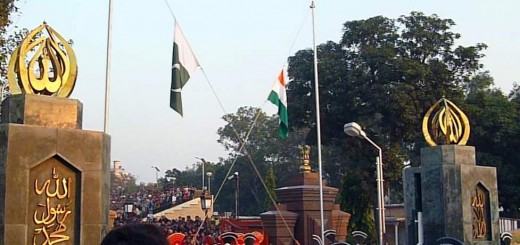The Autonomy is for India – By A. Kapuria
In post-dynastic democracy, greater autonomy for states is the only way to create a sustainable growth and stronger India.
Recently, The Economist wrote ‘While [Indian] GDP has grown by an average of 6% annually in the past ten years, this translates into an increase in income per person of just over 4% after allowing for the increase in population’. The best example of India’s ability to do better are provided by those few parts of the country that are growing much faster than the national rate. Some of these states are larger than many countries: Gujrat, the fastest growing state, has around 50M people; Tamilnadu has 65M, and Maharashtra 85M. Clearly, several Indian Tigers are buried in the sea of Indian population. Many of such states even have non-tiger like increasing fiscal deficits and strong dependence on subsidies. By contrast, Bihar and U.P. are among the laggards because of their collapsing infrastructure and poor governance. Bihar has the honor of declining per person GDP since early 1990s. Due to increasing fiscal deficits and strong dependence on subsidies, even the best run states are unable to build the infrastructure needed for sustainable growth.
Interestingly, the central government in India is free to determine its own deficit; whereas strict limits are placed on the amount of money Indian states can borrow directly from the money markets. This has helped maintain some fiscal discipline on states but has given freer reign to the center. Indian economic reforms so far have taken the form of lower tax rates, but without any reduction in bloated bureaucracy or pork barrel subsidies. Tamilnadu provides free power to farmers, so does the Punjab, along with water for irrigation, while their state electricity boards pile up losses and are unable to timely pay suppliers. The inter-state commerce in India is mired in archaic excise and tax structure, which slow down the movement of raw material and finished goods, thus further burden the feeble infrastructure.
The software and diamond exports, which do not rely on movement of heavy goods, are the only two major industries to achieve respectable levels of exports. Still these industries alone can neither generate sufficient jobs nor export earnings to fill the shortfall in foreign direct investment (FDI). Creation of jobs is essential to reduce 33% dilution of growth in GDP (from 6% to 4% – see above) due to population factor. The surprise is that some Indian states have achieved so much with so little. They could be an example for the laggards if competition among the states can be created, provided the growths in leading states could be sustained without making them bankrupt.
The centralized governance and British modeled parliamentary system add further overheads; and distort and delay the decision-making. The beginning of economic reforms proves this point so well, because to start the reform process, India heavily relied on ordinances rather than on democratic vote in the parliament.
The faster growing states send lesser number of parliamentarians to the Lok Sabha than the laggard states, and may not tolerate in the future the parliamentary veto the laggards enjoy over their destiny. Both the distribution of power and collected revenue must be equitable. Currently neither is fair nor equitable, and correction is over due. The present system worked when Nehru, his daughter Indira Gandhi, and his grandson Rajiv Gandhi had absolute power both at center and in the majority, if not all of the states.
The distracters and uninformed emotionally believe that more autono to states would weaken the center and hence weaken India. This is a wrong hypothesis; there is no merit in this argument. It merely lacks vision and courage to take bold initiatives. In this light let us analyze the recently passed Kashmir’s autonomy proposal. Kashmiri autonomy proposal demands:
1. exclusive right over all subjects, excluding, defense, foreign affairs and communications;
2. Chief minister to be called Prime-Minister;
3. Governor to be called Sadr-e-Riyasat (President);
4. Own flag;
5. Own Constitution and the right to amend it;
6. Authority to draw up fundamental rights;
7. Regulate all administrative and financial affairs without Central interference;
8. Beyond the jurisdiction of Article 365 on imposition of President rule;
9. Beyond the jurisdiction of Central Election Commission.
The exclusive right over subjects in the U.S. is known as states-rights. The exclusion list, in addition to the above, also includes, inter-state commerce, inter-state law and order, federal treasury (collection and distribution of federal taxes and revenue) and enforcement of federal laws. These additions to the federal responsibility are essential for a functioning country.
The proposal for titles for political posts in-lieu of chief minister and governor is not real, but thrown in the wish list. The U.S. states also have their own flag, but as long as the allegiance is to the nation under one flag is acknowledged and accepted. Each state can and should have its own state flag.
Likewise each state in the U.S. has its own constitution and the right to amend it, as long as allegiance and ultimate authority of nation’s constitution is acknowledged and accepted. As a result no state on its own, can vote itself out of the union. Each state in the U.S. has its own constitution and fundamental rights that are given to its citizen. That is why there is no death penalty in certain states (like Wisconsin) for state crimes, even though for the Federal crime there is a death penalty. Oklahoma City bombing case, one of the accused was only given prison sentence in the Federal trial, while he awaits trail in the state court where he may yet receive the death penalty. The state-court of California almost acquitted the police officers of the brutality, while the federal court trial for civil rights violations resulted in guilty verdict in the infamous Rodney King case.
The states in the U.S. have their independent supreme court, whose decisions in certain areas cannot be challenged in the U.S. Supreme Court also. The two supreme courts cannot interfere; the state law related matters are adjudicated in the state supreme court, while federal matter can go to the federal Supreme Court. Microsoft’s anti-trust case relates to inter-state commerce, and therefore is a federal matter and hence was tried in the U.S. court and is now destined to be decided by the federal Supreme Court.
Each state’s legislature has authority to draw fundamental rights as long as neither the enacted fundamental rights nor the state constitution violate the U.S. constitution. Similarly, each state has complete authority over its judiciary to adjudicate and enforce its constitution and fundamental rights. As a result California law and legal procedure is different from say in the state of New York. Thus there is no death penalty in the state of Wisconsin, but there is one in California. In many instances person has two legal recourses to choose from, a state court and a federal court. The choice is entirely that of an individual.
Each state can regulate its administrative and financial affairs without interference from Washington DC. Currently, California is running a surplus at the state level, while the state of Mississippi is not. The separation is maintained even at the revenue collection level, the federal and state separately collect revenues. Many states have no income and or sales taxes while others have.
Even within the government, there is a separation. The legislature (lower house of representative) is responsible for the budget, the President (at the federal level, and likewise the Governor at the state level) can only exercise its veto to approve or disapprove the budget, but cannot propose an independent budget, only house of the representative can do it.
The separation among executive powers, legislature and judiciary is also well defined. Unlike in India, where the Prime Minister as political expediency had recommended a fall of state government; in the U.S. the President cannot remove the elected state government. During national emergency, the Federal Government can takeover the administration for a limited period, after which it must seek the approval of the legislative branch. In national emergency the President certainly has extra-ordinary powers, but impeachment by the Senate is a strong check and balance over President’s emergency powers. Such checks and balances keep the executive branch – the President and Governors honest to their oath.
The independence of judiciary and treasury is maintained. The President and the Governor respectively appoint the Supreme Court justices at the federal and state level; but they have no power to remove justices. The justices cannot be retired. They enjoy lifetime appointment and can only leave the office at their free will. The same is true for the head of Federal Reserve Board. Thus the executive can neither blackmail nor threaten the removal and use legislative or economic action to gain a favor.
The plurality in Indian society demands a fundamental rethinking of the system of governance. This system cannot be a carry over from the dynastic-period of Indian democracy. Greater education and greater economic freedom are resulting into greater wealth generation and shall transform the society at greater pace too. The changes that have taken place in the last ten-years are far greater than the changes that took place in previous forty years. Indian society is now demanding superior economic infrastructure, and soon it will demand efficient political infrastructure too. Autonomy within India is a powerful way to achieve the aspiration of future Indians.
India, like the U.S., is more than a nation-state. It is a system, where diversity must coexist and must feel proud to be part of India. In the U.S., for example, Silicon Valley is just as much part as the Deep South state of Mississippi. These two would be as contrasting as Bihar and Maharashtra, yet belong to the same system, the United States of America. India has yet to reach there. Its citizens must feel part and proud of it. Indian troops do not need to suppress its citizens, or storm places of worships. This system must show every Indian a reason to belong and dream.
Indian system will be its own biggest enemy if it must rely on suppression of any of its citizens, and storming of anyone’s place of worship. Indian democracy must showcase to the world the democracy is not just for the rich. President Clinton said in Pakistan that imperfect democracy is better than no democracy. This axiom is true, because it gives continuity to change and above all hope for improvement to people. A completely independent – rather than no election commission – is crucial to ensure all segments of the society enjoy fruits of democracy. The chief of the election commission should be a lifetime appointment, and can be removed through impeachment. Otherwise no one should be able to touch the chief election commissioner.
The next evolution of Indian democracy is greater autonomy.
A. Kapuria is a Silicon Valley based high-technology entreprenuer and an angel investor. Published with thanks to Mr. Kapuria













